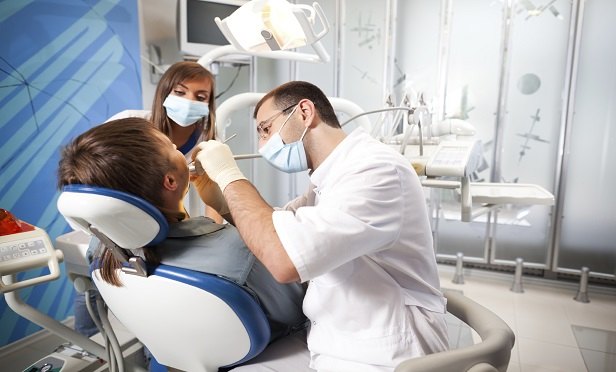 Those with no preventive care for at least two years were 55 percent more likely to reach their dental plan maximum compared to those who received preventive care at least once a year. (Photo: iStock)
Those with no preventive care for at least two years were 55 percent more likely to reach their dental plan maximum compared to those who received preventive care at least once a year. (Photo: iStock)
We all know this intuitively: If you brush and floss your teeth daily and regularly visit the dentist for a check-up and a professional cleaning, you might just not need that dreaded root canal.
Moreover, employees and employer will likely pay less in dental insurance claims for more serious treatments, sums up Guardian's research brief, “An ounce of prevention.”
The brief cites Guardian's 5th Annual Workplace Benefits Study, “Dental Benefits: A Bridge to Oral Health & Wellness,” which found that employer groups with higher utilization of preventive dental care over a six-year period experienced an 86 percent reduction in the use of major dental services in subsequent years, for a net savings of 16 percent on dental claims costs.
Related: 5 best, 5 worst states for dental health
Dental plan members also saved when getting a check-up and cleaning at least once a year, according to the study. They required less major dental services and, as a result, had lower out-of-pocket costs over a three-year period.
Those who did this for two years in a row had a $90 decrease in claim costs in the third year. However, members with no preventive care experienced an average increase of $720 in claim costs.
“Many working Americans believe that if they brush their teeth and have no pain, then there is no need to see the dentist,” the authors write. “But Guardian's recent analysis of claims data shows that plan members who receive at least annual preventive care are more likely to avoid serious oral health problems that require more costly treatment in later years.”
The study also found that those with no preventive care for at least two years were 55 percent more likely to reach their dental plan maximum compared to those who received preventive care at least once a year. Moreover, about one in four plan members (23 percent) who reach their annual maximum tend to reach it again the following year, and 7 percent hit the maximum in three or more consecutive years.
On average, plan members' dental claim costs are four times higher in years when they hit their annual maximum, according to the study.
“Dental plan designs with greater coverage tend to encourage higher utilization of preventive care,” the authors write. “Members whose dental plans have more allowances for preventive care benefits, as well as higher co-insurance levels and lower copays, are more likely to receive an annual exam/cleaning compared to those in more limited dental plans.”
Conversely, plans with higher out-of-pocket costs and reduced benefits cause many individuals to skip or delay routine check-ups and cleanings.
“Dental benefit programs that encourage at least annual exams, cleanings and x-rays can positively impact preventive care utilization and ultimately support a healthier and happier workforce,” the authors write. “An ounce of dental care prevention certainly creates a valuable win-win for employers and their employees.”
Read more:
- Not a lot to smile about: Study explores (lack of) dental coverage under Medicare
- Dental and vision insurance: Wellness benefits?
- Can proper dental care ward off ER visits?
© 2025 ALM Global, LLC, All Rights Reserved. Request academic re-use from www.copyright.com. All other uses, submit a request to [email protected]. For more information visit Asset & Logo Licensing.








